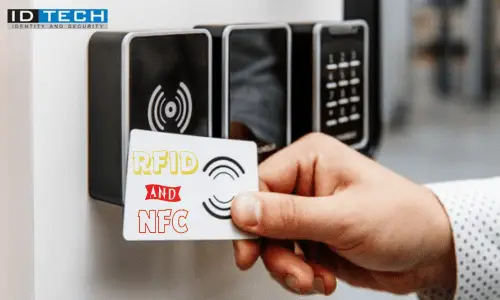In an era where security concerns are more pronounced than ever, organizations continually seek innovative solutions to safeguard their assets. Radio Frequency Identification (RFID) and Near Field Communication (NFC) technologies have emerged as powerful tools for enhancing access control systems. Integrating these technologies with existing security infrastructures can provide a robust and seamless security solution.
Understanding RFID and NFC Technologies
RFID technology uses radio waves to communicate between a reader and a tag, which can be embedded in various objects, such as access cards or key fobs. NFC, a subset of RFID, operates over shorter distances and is commonly used in mobile devices for contactless transactions. Both technologies enable quick and secure identification, making them ideal for access control applications.
Benefits of Integration
- Enhanced Security: Integrating RFID and NFC with existing security systems strengthens overall security. RFID tags and NFC-enabled devices can be programmed with unique identifiers, reducing the risk of unauthorized access. This system can complement traditional security measures like PINs and biometric scanners, providing multi-layered protection.
- Seamless User Experience: Employees and authorized personnel benefit from the convenience of contactless access. They can use their RFID cards or NFC-enabled smartphones to gain entry without fumbling with keys or remembering passwords. This not only improves user satisfaction but also streamlines access processes.
- Efficient Management: Integration allows for real-time monitoring and management of access permissions. Security personnel can easily update access rights, track entry logs, and generate reports from a centralized system. This capability is crucial for upholding security protocols and rigorously auditing access activities.
- Scalability: RFID and NFC systems are highly scalable, making them suitable for both small businesses and large enterprises. As security needs evolve, the system can be expanded or upgraded without overhauling the entire infrastructure.
Steps for Successful Integration
- Assessment: Evaluate the current security system to determine compatibility with RFID and NFC technologies. Identify areas where integration can provide the most benefit and plan the implementation accordingly.
- Selection of Hardware: Choose RFID readers, NFC tags, and access control devices that meet your security requirements and are compatible with existing systems. Ensure that the hardware supports the necessary communication protocols and security features.
- System Integration: Work with a professional to integrate RFID and NFC components with the existing security infrastructure. This may involve configuring software, installing hardware, and testing the system to ensure smooth operation.
- Training and Support: Provide training for security personnel on using the new system and offer ongoing support to address any issues that arise. This guarantees the effective use and ongoing operation of the system. ID Tech, a prominent player in the RFID and NFC market, offers state-of-the-art RFID readers and IDT NFC readers that are Made in India. Their products exemplify advanced engineering and innovation, providing secure, reliable, and efficient access control solutions. By incorporating these readers into existing systems, organizations can enhance their security infrastructure while benefiting from cutting-edge technology developed locally.
Integrating RFID and NFC access control with existing security systems provides numerous advantages, including improved security, user convenience, and efficient management. However, addressing cybersecurity and data privacy concerns is essential. ID Tech’s RFID and NFC readers offer a robust solution, featuring advanced security measures and compliance with data protection regulations. By leveraging these innovative products, organizations can enhance their security systems and protect their valuable assets effectively.





